O Mental Floss publicou uma lista com sete livros que não estão disponíveis para compra ou são muito difíceis de encontrar, além de não haver perspectiva de quando serão reimpressos (alguns provavelmente jamais serão) e as razões para isso vão desde a vontade do autor que gosta que o livro seja uma raridade (Fast Time at Ridgemont High, de Cameron Crowe); o que descobriu que seu livro influenciou assassinos (Rage de Stephen King/Richard Bachman); o livro cujo autor aparentemente preferiria não ter ter escrito (Invasions of the Space Invaders, Martin Amis) até o misterioso desaparecimento da autora (The House Without Windows, de Barbara Newhall Follett).
"In an age where readers can get their book fix via downloads or overnight shipping, it can be easy to overlook the fact that not everything is available on demand. Thousands of titles remain off-limits in both digital and analog form for a variety of reasons—some controversial, others due to the author's wishes. Take a look at seven titles you’re unlikely to find on shelves anytime soon.
1. FAST TIMES AT RIDGEMONT HIGH // CAMERON CROWE (1981)
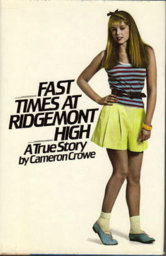
Screenwriter and director Crowe (Say Anything, Almost Famous) began contributing to Rolling Stone and other music publications when he was still a teenager. At the age of 22, he convinced Clairemont High School in San Diego to let him enroll as a student so he could chronicle the experience of a senior class. Fast Times, which changed his classmates' names to maintain a semblance of privacy, was adapted into the 1982 film starring Sean Penn.
Despite the name recognition of both the title and its author, Crowe has resisted any attempt to put it back in print. Talking to The Hollywood Reporter in 2011, Crowe said that he “likes that there’s one thing that’s not readily available … I like it too much as a kind of bootleg.”
2. RAGE // STEPHEN KING (1977)
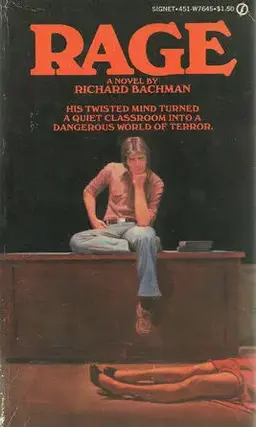
In the late 1970s, horror novelist Stephen King—who was often chastised for being too prolific—decided to adopt a pseudonym in order to release more of his material without the accompanying criticism. Writing as Richard Bachman, he published seven books. One, Rage, was written while King was in his late teens and concerned a high school student who kills his teacher and takes his algebra class hostage. By 1997, at least three adolescents who had brought weapons to school and killed or injured classmates had admitted to reading the book or had it found in their possession; one said he modeled his behavior directly after the book’s lead character.
A distraught King convinced his publisher that the book was a “possible accelerant” and had no place on shelves. They complied; King has said that “I pulled it because in my judgment it might be hurting people, and that made it the responsible thing to do.”
3. PROMISE ME TOMORROW // NORA ROBERTS (1984)
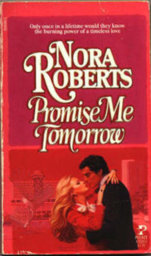
While Roberts might not be as celebrated as King, her success in the romance genre is impressive by any measure. As of 2011, she had over 400 million books in print. The lone exception: Promise Me Tomorrow, a title she wrote early on in her career. Though Roberts had already finished well over 20 books by the time Promise Me Tomorrow was released, it doesn’t appear she’s eager for people to revisit it. In 2009, Roberts told The New Yorker that it was full of clichés and committed the most egregious of romance-novel sins: an unhappy ending.
4. INVASION OF THE SPACE INVADERS // MARTIN AMIS (1982)
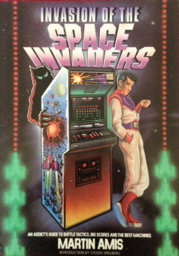
British novelist Martin Amis took a jarring detour in 1982 when he authored this slightly tongue-in-cheek “guide” to the arcade games of the era, which was part gamer’s travelogue and part critical essay of the industry. The unlikely pairing of author and subject was enough to entice Steven Spielberg to write the introduction, but not enough for Amis to ever consider revisiting it: When a writer for The Guardian suggested it should resurface, Amis stared at him and offered no response at all.
5. SEX /// MADONNA (1992)
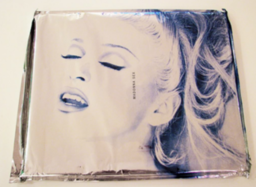
By the time Madonna committed to shooting a coffee table photography book of herself and models (including Vanilla Ice) in various compromising positions, the world had gotten fairly used to her provocative behavior. Nonetheless, when Warner Books released Sex in 1992, it promptly sold through half of its million-copy print run inside of a week. Intended as a limited-availability collector’s item, the publisher has never expressed interest in returning to it; BookFinder, which releases an annual list of the most sought-after out-of-print titles, regularly places the 132-page book at or near the top of the heap.
6. ENCYCLOPAEDIA BRITTANICA (1768-2012)
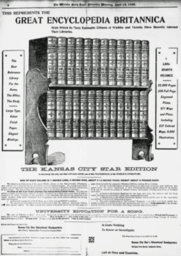
The venerable reference volume taxed its last particle-board bookshelf in 2012, when Encyclopaedia Brittanica, Inc. decided to cease publication of its analog information library. At 129 pounds, the $1395 collection sold just 8000 copies, a far cry from the 120,000 sets the company moved in 1990. The advent of online resources like Wikipedia and a prohibitive cost led Brittanica to focus on online strategies. A total of 15 volumes were released through 2010.
7. THE HOUSE WITHOUT WINDOWS // BARBARA NEWHALL FOLLETT (1927)
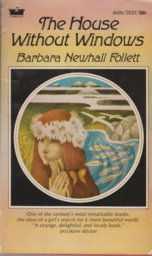
Book critic Wilson Follett’s love of words may have been hereditary: His daughter, Barbara, was consumed with them early on, pecking away at a novel at the age of eight. When she was 12, her father assisted her in completing The House Without Windows, a novel about a girl who disappears into the woods and finds companionship with animals. Follett passed the manuscript on to his contacts at Knopf, who published it to widespread acclaim in 1927.
In 1939, the former child prodigy was unhappily married. She left her home with a small amount of money and disappeared, never to be seen again. According to a relative who maintains a web presence for her work, Knopf has not acknowledged who might hold the copyright to the book. It remains available only via secondhand sellers.
"In an age where readers can get their book fix via downloads or overnight shipping, it can be easy to overlook the fact that not everything is available on demand. Thousands of titles remain off-limits in both digital and analog form for a variety of reasons—some controversial, others due to the author's wishes. Take a look at seven titles you’re unlikely to find on shelves anytime soon.
1. FAST TIMES AT RIDGEMONT HIGH // CAMERON CROWE (1981)

Screenwriter and director Crowe (Say Anything, Almost Famous) began contributing to Rolling Stone and other music publications when he was still a teenager. At the age of 22, he convinced Clairemont High School in San Diego to let him enroll as a student so he could chronicle the experience of a senior class. Fast Times, which changed his classmates' names to maintain a semblance of privacy, was adapted into the 1982 film starring Sean Penn.
Despite the name recognition of both the title and its author, Crowe has resisted any attempt to put it back in print. Talking to The Hollywood Reporter in 2011, Crowe said that he “likes that there’s one thing that’s not readily available … I like it too much as a kind of bootleg.”
2. RAGE // STEPHEN KING (1977)

In the late 1970s, horror novelist Stephen King—who was often chastised for being too prolific—decided to adopt a pseudonym in order to release more of his material without the accompanying criticism. Writing as Richard Bachman, he published seven books. One, Rage, was written while King was in his late teens and concerned a high school student who kills his teacher and takes his algebra class hostage. By 1997, at least three adolescents who had brought weapons to school and killed or injured classmates had admitted to reading the book or had it found in their possession; one said he modeled his behavior directly after the book’s lead character.
A distraught King convinced his publisher that the book was a “possible accelerant” and had no place on shelves. They complied; King has said that “I pulled it because in my judgment it might be hurting people, and that made it the responsible thing to do.”
3. PROMISE ME TOMORROW // NORA ROBERTS (1984)

While Roberts might not be as celebrated as King, her success in the romance genre is impressive by any measure. As of 2011, she had over 400 million books in print. The lone exception: Promise Me Tomorrow, a title she wrote early on in her career. Though Roberts had already finished well over 20 books by the time Promise Me Tomorrow was released, it doesn’t appear she’s eager for people to revisit it. In 2009, Roberts told The New Yorker that it was full of clichés and committed the most egregious of romance-novel sins: an unhappy ending.
4. INVASION OF THE SPACE INVADERS // MARTIN AMIS (1982)

British novelist Martin Amis took a jarring detour in 1982 when he authored this slightly tongue-in-cheek “guide” to the arcade games of the era, which was part gamer’s travelogue and part critical essay of the industry. The unlikely pairing of author and subject was enough to entice Steven Spielberg to write the introduction, but not enough for Amis to ever consider revisiting it: When a writer for The Guardian suggested it should resurface, Amis stared at him and offered no response at all.
5. SEX /// MADONNA (1992)

By the time Madonna committed to shooting a coffee table photography book of herself and models (including Vanilla Ice) in various compromising positions, the world had gotten fairly used to her provocative behavior. Nonetheless, when Warner Books released Sex in 1992, it promptly sold through half of its million-copy print run inside of a week. Intended as a limited-availability collector’s item, the publisher has never expressed interest in returning to it; BookFinder, which releases an annual list of the most sought-after out-of-print titles, regularly places the 132-page book at or near the top of the heap.
6. ENCYCLOPAEDIA BRITTANICA (1768-2012)

The venerable reference volume taxed its last particle-board bookshelf in 2012, when Encyclopaedia Brittanica, Inc. decided to cease publication of its analog information library. At 129 pounds, the $1395 collection sold just 8000 copies, a far cry from the 120,000 sets the company moved in 1990. The advent of online resources like Wikipedia and a prohibitive cost led Brittanica to focus on online strategies. A total of 15 volumes were released through 2010.
7. THE HOUSE WITHOUT WINDOWS // BARBARA NEWHALL FOLLETT (1927)

Book critic Wilson Follett’s love of words may have been hereditary: His daughter, Barbara, was consumed with them early on, pecking away at a novel at the age of eight. When she was 12, her father assisted her in completing The House Without Windows, a novel about a girl who disappears into the woods and finds companionship with animals. Follett passed the manuscript on to his contacts at Knopf, who published it to widespread acclaim in 1927.
In 1939, the former child prodigy was unhappily married. She left her home with a small amount of money and disappeared, never to be seen again. According to a relative who maintains a web presence for her work, Knopf has not acknowledged who might hold the copyright to the book. It remains available only via secondhand sellers.
Última edição:

